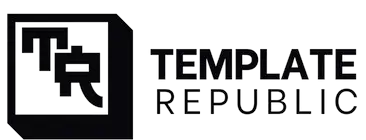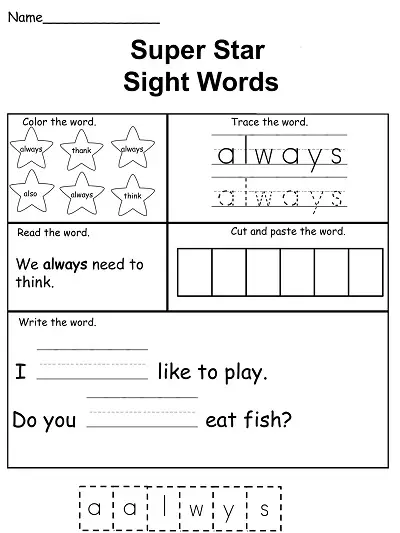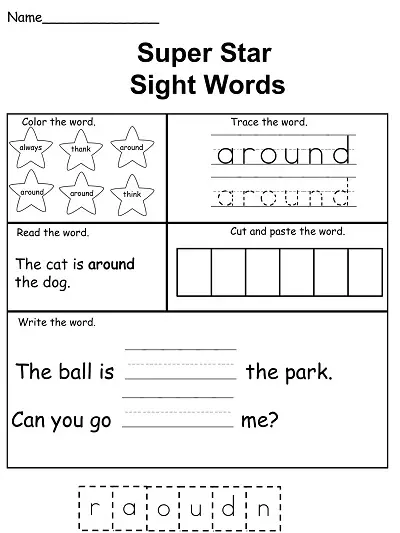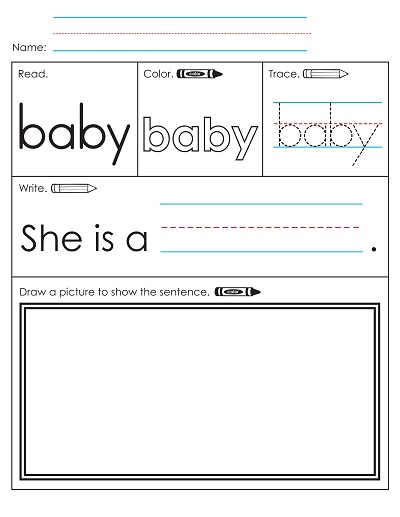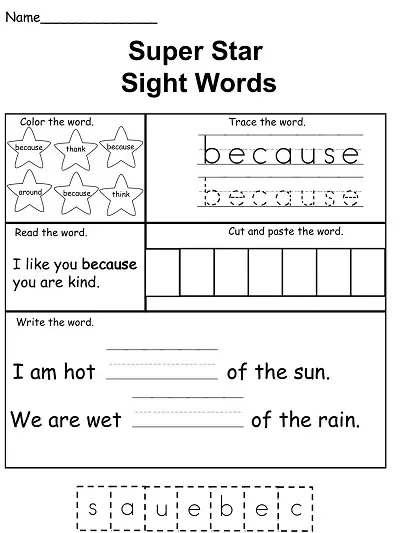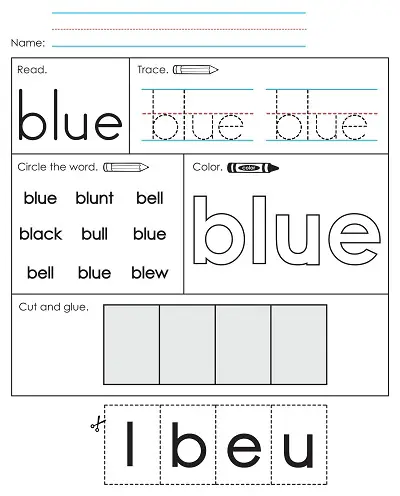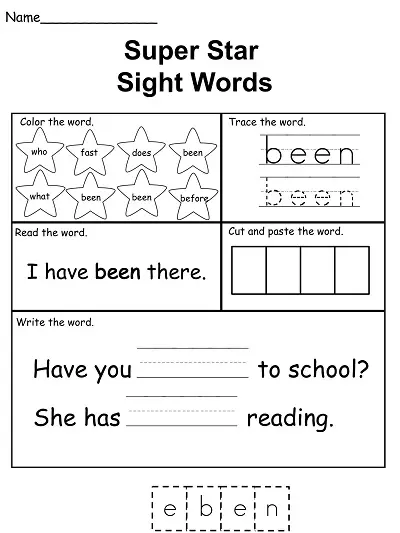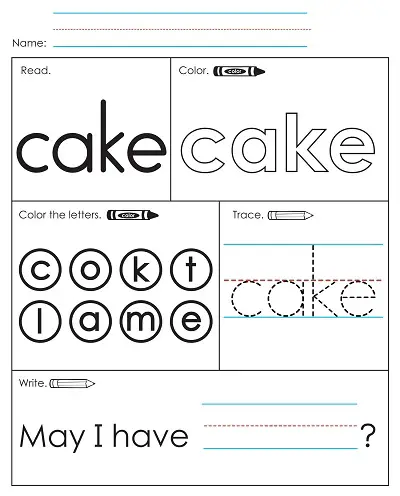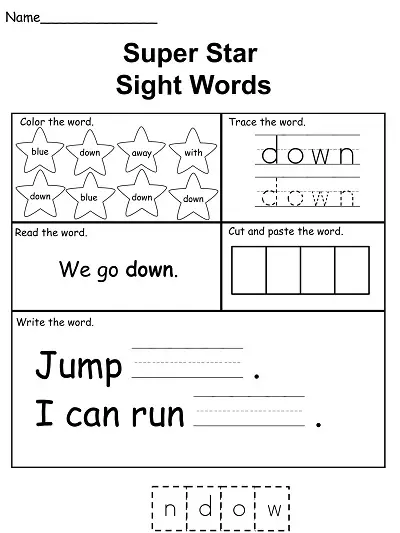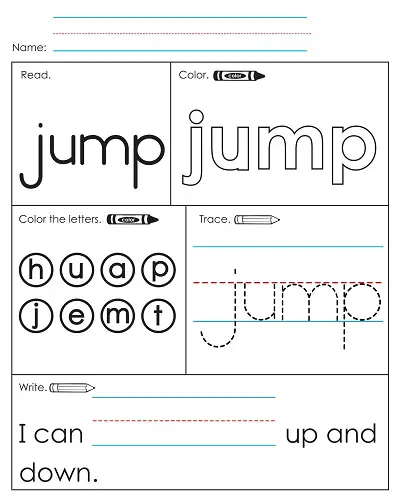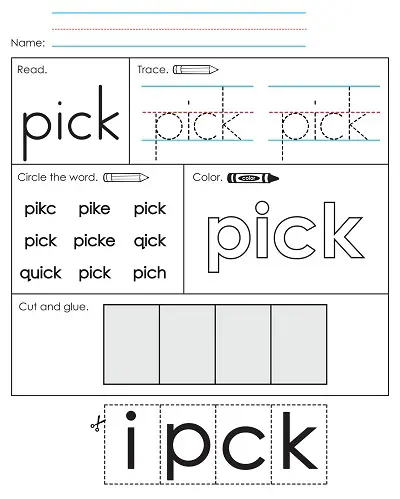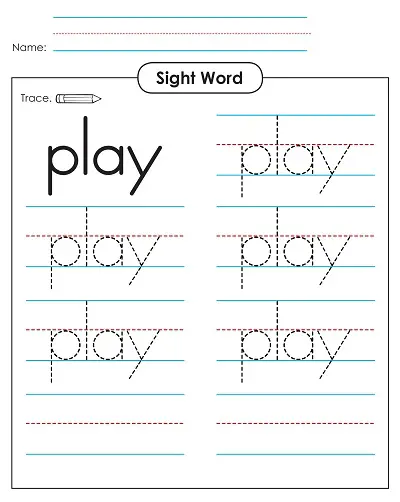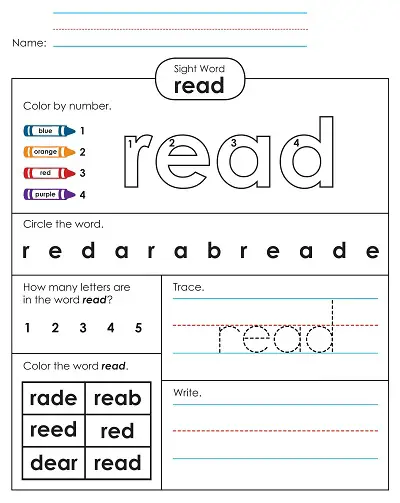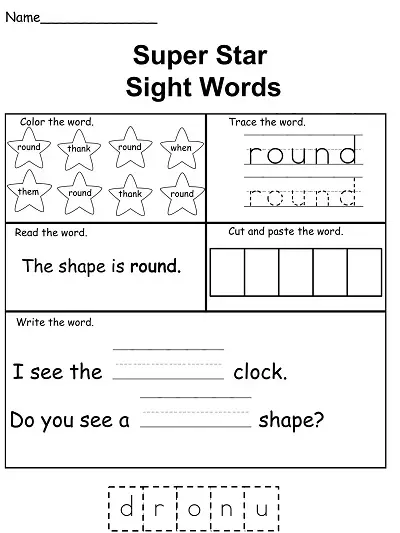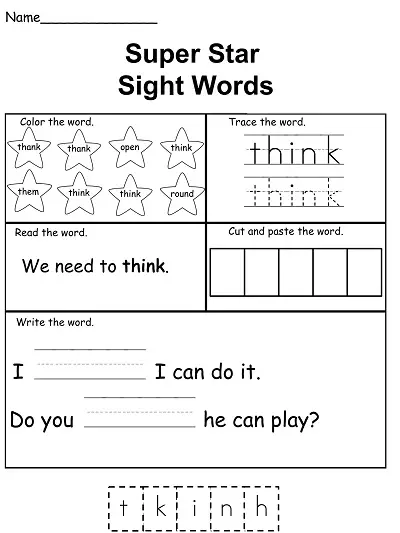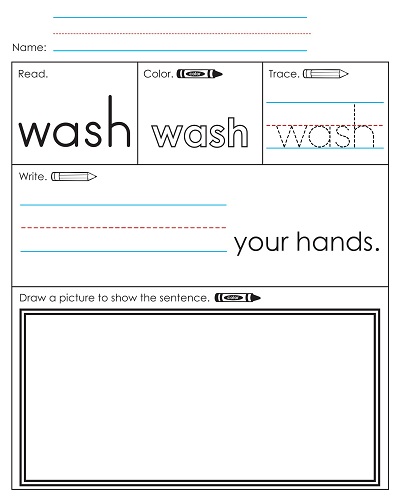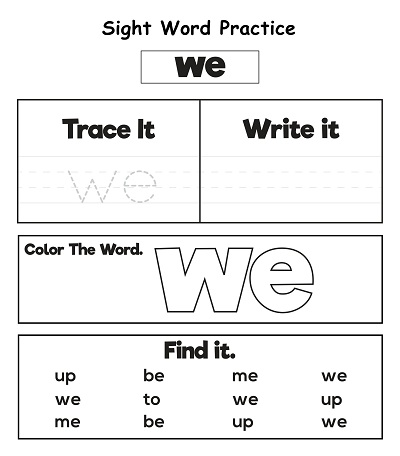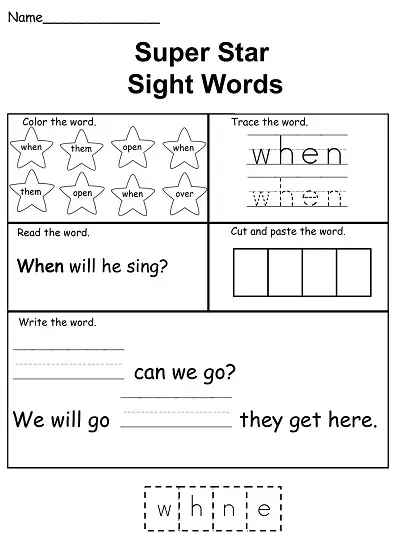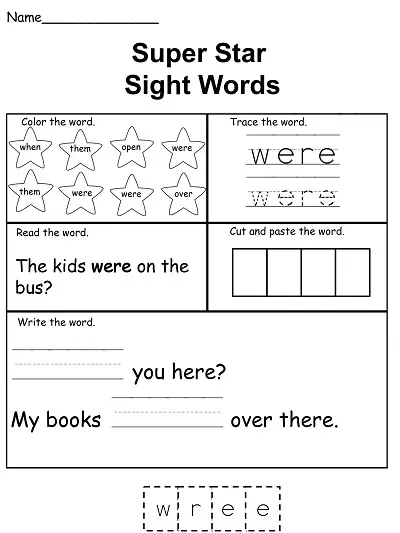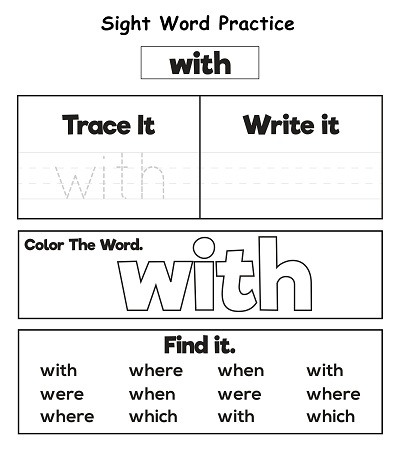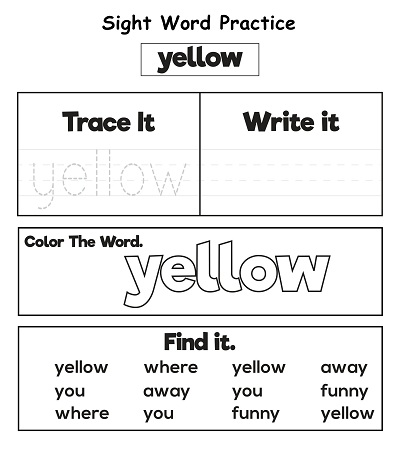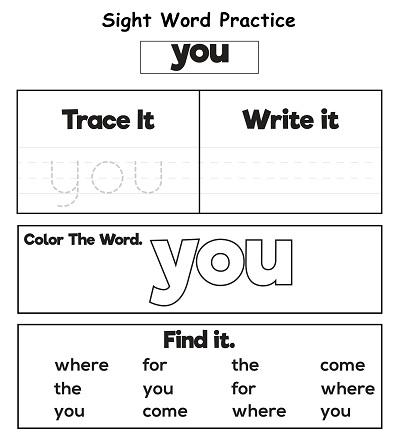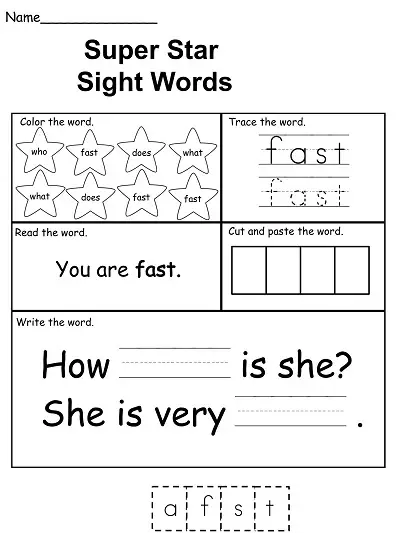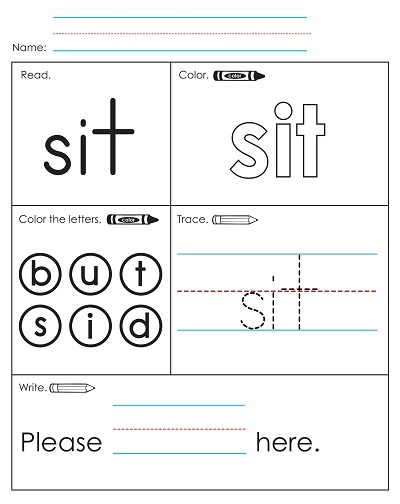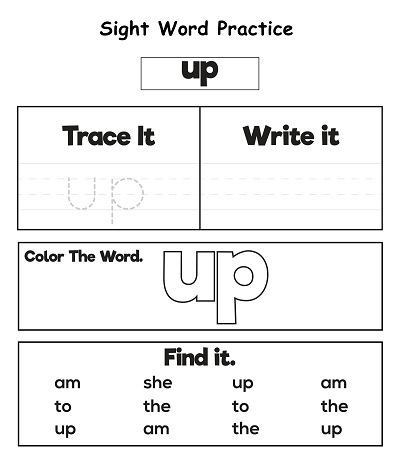30+ Free Sight Word Worksheets – Printable PDF, MS Word
Sight words are an important part of learning how to read. They are individual words that have been identified as representing common words used in everyday texts and language. Once sight words have been mastered, children can begin reading with understanding and increase their confidence and fluency in the process.
Table of Contents
Research suggests that familiarizing students early on with frequently used sight words is the key to helping them become skilled readers. The “whole-word method” of introducing students to these phrases instead of trying to pronounce each word can help even young children quickly become familiar with them. Implementing strategies such as memorization, flashcards, and games can be effective tools when teaching children sight words. It can give them a strong foundation for future literacy journeys in life.
Download Free Sight Word Worksheet
What are Sight Words?
Sight words are foundational to reading fluency, and are composed of the most frequently used words in print. Though their usage relies on memorization rather than phonics understanding, sight words help children expand their vocabulary quickly and allow for more efficient comprehension of written text. It is important for adults to practice these over time with children as well, to embed them into memory and promote reading fluency. This can be done through engaging activities like flashcards, games, stories, rhyming & spelling activities and even story-writing to create a strong foundation in language understanding.
Why Sight Words are Important in Early Reading
Sight words are an essential part of learning to read. These are words that children need to recognize quickly and easily by sight, without having to sound them out. When first starting to learn how to read, many children stumble over every word and this can be discouraging. By introducing these sight words in the early stages of reading, children can begin recognizing common patterns and understand how language works. Sight words make reading more enjoyable for children because they become familiar with the structure of stories rather than feeling overwhelmed with how much decoding is involved. Knowing important sight words boosts confidence as children start building up their early reading skills, opening a whole new world of literacy for them.
How to Identify and Teach Sight Words
Sight words are an essential part of many educators’ reading instruction. These words represent the most frequently used terms in the English language that cannot be sounded out using their phonetic sounds. Identifying and teaching sight words to young readers is not difficult, but it requires dedicated time and effort. Educators can start by introducing children to learning just a few sight words at a time five to ten new terms each week is a good number to aim for. By focusing on multiple strategies like visual word walls, hands-on activities, and sentence-building games, teachers can successfully ensure their students have these crucial words mastered in no time. With some resourcefulness and creativity, sight word instruction can be delivered effectively in any classroom.
Common Sight Words for Beginning Readers
Learning to read can seem like a daunting task for any beginning reader. However, it can be made easier with the introduction of common sight words. Sight words are words that a child should learn by heart since they appear so often in everyday writing. They are also referred to as high-frequency words and include common nouns, verbs, adjectives, and adverbs. Examples of common sight words include ‘the’, ‘of’, ‘and’, ‘a, and ‘it’. Memorizing these simple but essential words can help a child to identify more challenging words in written text. Mastering them is an important step on the road to reading success.
Tips for Reinforcing Sight Word Learning
Sight words are a crucial part of learning to read, but can also be very challenging to learn. One effective way to reinforce sight word learning is by using flashcards or an app specifically designed for reading. Make sure the cards or app have visuals or images that connect the sight word being practiced with its meaning. The more creative and engaging the lesson plan utilizing these tools is, the better. Additionally, encouraging children to practice sight words in context whenever possible is beneficial. Have your child look through books they enjoy and underline or circle any sight words they recognize. This will help them understand how to use the words while also reinforcing their memorization of them. Following these tips can make mastering sight words much easier and ensure your child can move ahead in their language development with ease.
Benefits of Using Sight Word Worksheets
Sight word worksheets provide students with multiple opportunities to practice these important words. The repetitive nature of the activities encourages them to continue practicing until they master each word, which increases their confidence as readers. Additionally, many sight word worksheets are designed to be both engaging and fun, making it less likely that students will become frustrated or overwhelmed during the learning process.
Finally, sight word worksheets are often interactive, allowing students to easily track their progress as they go along. This helps build self-confidence by showing them that they have mastered certain concepts or skills even if it takes some time. Plus, when young learners see tangible evidence of their success crossing off a list or coloring in a picture it boosts motivation because they know exactly what they are working towards!
